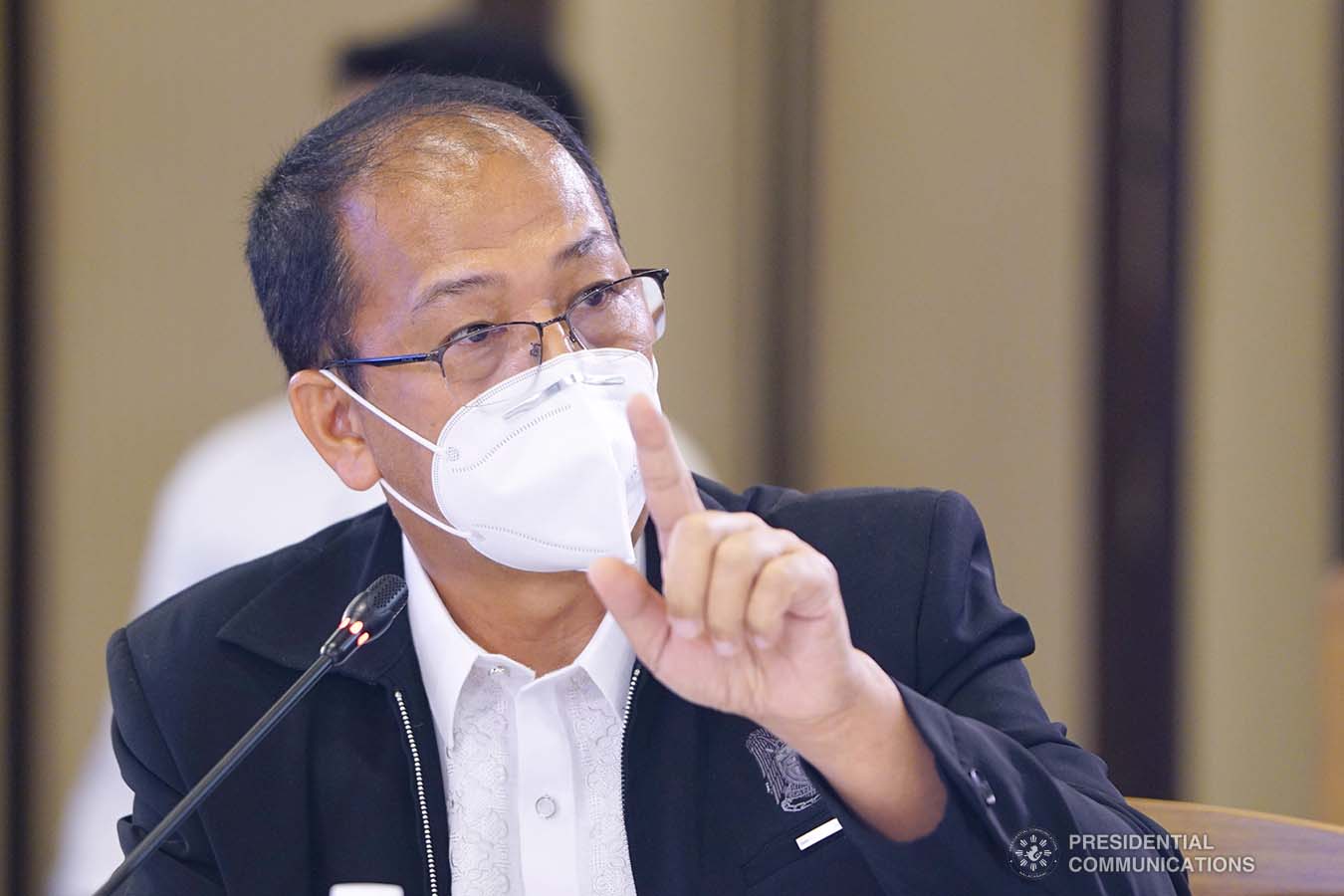October COVID-19 jabs target reached; but less than 25% of population fully vaccinated

(FILE) Secretary Carlito Galvez Jr.JOEY DALUMPINES/ PRESIDENTIAL PHOTO
MANILA, Philippines — With just two months to go before the year ends, the national government has fully vaccinated less than a quarter of the more than 110 million Filipinos in the country.
But vaccine czar Secretary Carlito Galvez Jr. was optimistic the government would reach its toned-down target to fully inoculate 50 million by the end of December.
According to Galvez, the chief implementer of the National Task Force Against COVID-19, the country breached its target to fully vaccinate 25 million Filipinos on Friday—eight days ahead of its October 31 deadline.
He gave assurance to the public that the goal to vaccinate 55 million people before the end of the month, as requested by President Rodrigo Duterte, would be accomplished. As of Friday, a total of 54,444,161 doses have been administered.
“We are also confident that we can breach 100 million vaccines delivered by the end of the month,” Galvez said on Friday during the arrival of the 698,600 doses of AstraZeneca procured by the private sector and local governments.
In addition to the more than 1 million doses of Pfizer shipped later on Friday, the country received 93,661,610 COVID-19 vaccines, both procured and donated, since February.
Meanwhile, an OCTA Research survey last month showed that six out of 10 Filipinos want to get inoculated against COVID-19 as the country continues to get a steady supply of vaccines.
Conducted from September 11-16, the noncommissioned survey released on Friday showed that 61 percent of adult respondents were “willing to get vaccinated against COVID-19.”
Of the 1,200 respondents, 36 percent had received their COVID-19 jabs, with 21 percent already fully vaccinated. Metro Manila had the highest immunization rate at 85 percent.
But among those who refuse to get jabbed, uncertainty on the safety of vaccines remained the main reason at 65 percent.
Sen. Juan Edgardo Angara, for his part, on Friday called attention to a World Health Organization report that some 3.4 million senior citizens remained unvaccinated in the Philippines.
He said it was incumbent on health officials to “actively seek out” the elderly to make sure they received their shots.
Local governments in regions outside Metro Manila would like to receive more COVID-19 vaccines and would be able to administer these to their population, according to League of Provinces of the Philippines president Presbitero Velasco Jr.
For more news about the novel coronavirus click here.
What you need to know about Coronavirus.
For more information on COVID-19, call the DOH Hotline: (02) 86517800 local 1149/1150.
The Inquirer Foundation supports our healthcare frontliners and is still accepting cash donations to be deposited at Banco de Oro (BDO) current account #007960018860 or donate through PayMaya using this link.